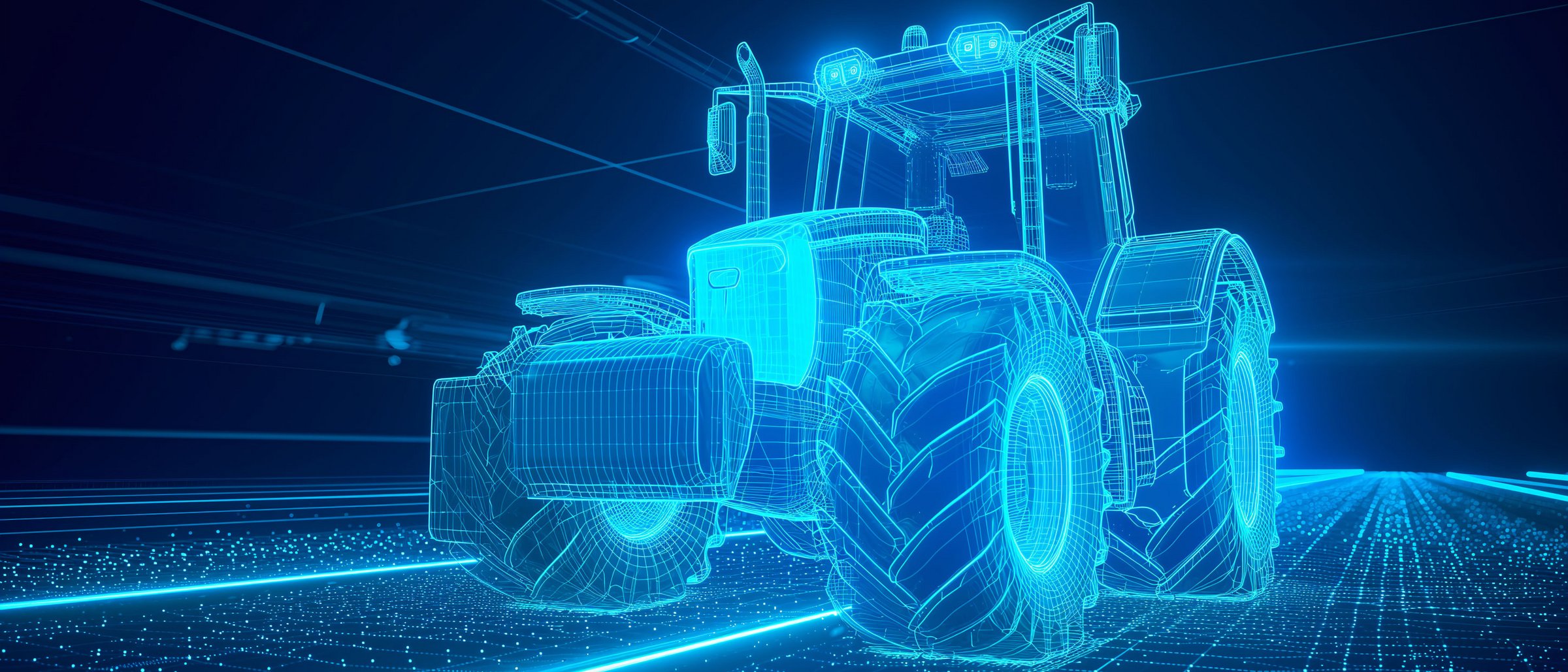Automation in the off-highway sector: Smart sensors and sensor fusion pave the way to autonomous working machinery
Excavators, bulldozers, tractors: all-terrain commercial vehicles have to get to work when it's time to get off the road. The evolution of mobile machinery has been significantly influenced by rapid advances in sensor technology. Powerful sensor systems take the strain off the driver and increase efficiency. The technology providers support their customers from the very beginning in the development of market-relevant solutions that ensure demand-oriented automation.
The need for reliable technologies in the off-highway sector is growing rapidly with sensors playing an increasingly important role in the monitoring and control of mobile machinery used in agriculture, forestry, construction and mining. However, choosing the most appropriate sensors is of crucial importance, as, in contrast to industrial automation, much higher demands exist for mobile applications. Agricultural and construction machines must collect their data under adverse conditions and providing reliable measurements where factors like dirt, moisture and extreme temperatures may impact results.

Harsh conditions, robust instrumentation
As an example, where a threshing unit is to work continuously, staying level on an uneven field, robust inclination sensors must detect deviations laterally and in the direction of travel. The driver then has all the information needed to both correct and avoid overloading. Strong vibrations lead to measurement noise - errors in angle and position measurement – and the task for the technology providers is to adapt the sensors to the conditions that prevail off-road. Robust measurement systems that correct inclination sensors using a gyroscope can effectively block out such jolts.
Sensor systems for mobile automation are of particular importance for driver assistance. The assistance functions currently available are the first step on the way to an autonomous mobile machine that carries out its work automatically without manual intervention. This progress is reflected in the phased and demand-driven approach that technology providers are taking to development - starting with warning functions in the cockpit, through semi-autonomous systems that support the driver, to complete telematics packages that increase the efficiency of machines even in remote regions. Engineers, developers and fleet managers are offering a complete toolbox for almost all sensor applications in mobile machinery.
High integrity sensor systems improve mobile machinery safety
A particularly interesting example is high-resolution radar, operating around 77GHz, that detects both moving and stationary objects. The radar sensor can accurately monitor objects in the vehicle's surroundings and, in combination with assistance systems, can aid the driver and warn of any potential collisions. Solutions such as those offered by electronics expert Hella work with a 360-degree frequency-modulated continuous wave radar, which functions reliably even in extreme temperatures, at night and in poor visibility conditions caused by fog, rain or snow. The sensors can record various data about the objects in the vehicle's surroundings, including the distance, relative speed and the angle at which the objects are moving.
The producers draw on a broad technology portfolio from the automotive sector, which they are continuously developing for off-highway use, above all, 24 Volt compatibility and the IP69K rating. They thus provide OEMs of mobile machinery with a practical modular system for cost-effective production applications, with which they can design their own “plug & play” assistance systems. In addition to radar sensors, systems using other sensors like ultrasonics or cameras can be flexibly configured and tailored to the requirements of the specific application. A simple sensor system might only detect obstacles and measure their distance, whereas high-end solutions combine radars with cameras leading to much improved object localization and detection reliability.
Detailed interpretation of the environment
By “fusing” the data from different sensors, the advantages of the different measurement technologies can be optimally combined, thus increasing the potential of the assistance and safety functions. Powerful “data fusion” algorithms that are increasingly using artificial intelligence, enable the interpretation of the sensor data, providing a detailed representation of the environment around the vehicle. In advanced steering system solutions, sensor fusion facilitates autonomous operation in the field, such as precision farming with modern plant row recognition or precise section control. Using GPS, the machines follow specified routes with high accuracy, reducing overlapping and the associated excess use of pesticides or fertilizers.
For object detection, distance measurement, and collision avoidance, Bosch uses a combination of ultrasonic and radar sensors for its “Off-Highway Surround Sensing” offering. The combination of ultrasonic technology, optimized for close-range applications, with radar systems for both near- and far-field monitoring can be used for collision warning and avoidance as well as for distance control, for example with spray booms or grape harvesting. The system ensures that the optimal distance between the harvesting machine and the vines is maintained. Using precise localization, the system not only warns the driver of a possible collision, but also provides the exact distance and position of other objects, making it easier, for example, to drive two machines in parallel. "With Off-Highway Surround Sensing, we are creating the basis for the efficient development of more advanced assistance functions. In the future, agricultural machines will be able to perform many work steps completely automatically," explains Stefan Schenk, responsible for the Off-Road division at Robert Bosch GmbH.
Equipped for the trends of tomorrow
Even though it will probably be a few years before autonomous driving machines dominate construction sites and agricultural fields, networking and digitization are already making their way into the off-highway sectors. Sensors make it clear what is happening in and around the machines, and allow drivers to optimize their machines and avoid being overloaded. There is already a wide range of solutions for position, speed and tilt detection that prepare commercial vehicles for the automation requirements of tomorrow.
